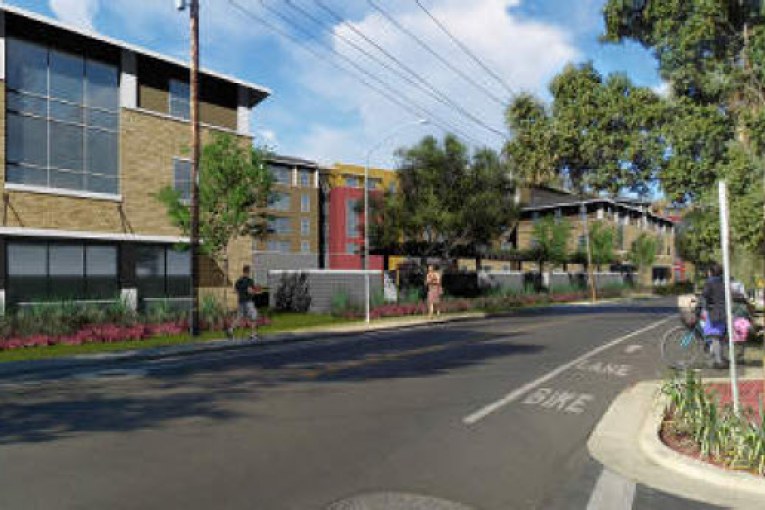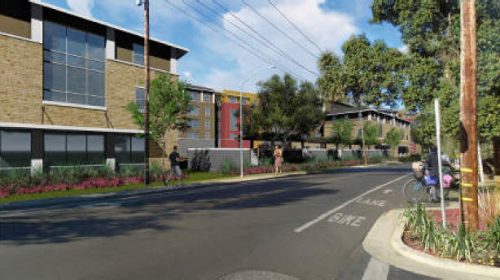

This weekend, the local paper carried a couple of different op-eds on Lincoln40 and the housing crisis. The first piece was by UC Davis freshman and ASUCD Senator Alisha Hacker. The second was by former Mayor Dan Wolk and Social Services Commissioner Matthew Wise.
For Ms. Hacker, she cited, as one of the reasons she ran for office, the need “to work collaboratively with both UC Davis and the city of Davis to find solutions to our housing crisis.”
In the last week, I have had a lot of conversations about UC Davis students and the housing crisis here in the community, and my general view is that most “adults” really do not understand the depth of the crisis and how deeply it has impacted the students.
Ms. Hacker writes: “While the causes of the housing crisis are multifaceted, solutions are on the horizon, and that means a greater quality of life is closer than we think for many students if we 
focus our energy on solving the problem.”
One of the big issues that continues to puzzle me is the extent to which the “adults” oppose the notion of rent-by-bed. In my contacts with students, from what I have seen most prefer the rent-by-bed solution. Why? For one thing, it allows each renter to be responsible for their own lease. For another, if there is a problem, the renter can leave more easily.
Ms. Hacker makes other points as well. She points out: “Lincoln40 intends to rent by the bed. Some have raised the issue that this is more expensive to rent by the bed, but those arguments fall short of the entire picture.”
She writes, “By-the-bed rents generally include all amenities — even amenities like WiFi and study space. There is no squabbling with roommates over who pays for water and who pays for internet. It’s all built in and one transaction at the end of each month covers all of our living expenses except for food. Additionally, units in by-the-bed leased apartment complexes are also generally furnished. When you take all of this into consideration, a lot of value is embedded into by-the-bed rent.”
That is a key point that is missed when looking at costs. Rent may appear slightly higher, but you have to look at what that rent pays for.
She also makes the liability point: “In addition to being inclusive of amenities, by-the-bed rent lessens a tenant’s liability. If a roommate is late paying rent, or bails altogether, no one else is penalized. Additionally, roommates don’t have to fight over which one of them or whose parent takes the responsibility of being a cosigner.”
There are specific advantages to Lincoln40 that she points out. She argues that “the location of Lincoln40 is optimal for students and young professionals. We do not want the added expense of a car if we can avoid it. With less than a three-quarter-mile walk to the UC Davis campus or downtown, and close proximity to transit and Amtrak, we could not ask for a better location. Recent grads who work in Sacramento but want to stay in Davis can easily use Amtrak for their daily commute.
“Beyond prospective residents, the pedestrian bridge that this project will contribute to will be an excellent amenity for residents living on Olive Drive and south of Olive Drive. In that way, Lincoln40 promises to benefit the Davis community as a whole.”
Former Mayor Dan Wolk and Social Services Commissioner Matthew Wise present a different picture when talking about Lincoln40.
They make four key points.
First, “Lincoln40 is redeveloping an infill parcel within a short bike ride or walk both to Downtown Davis and the UC Davis campus.” This, they argue, means that “students or young professionals who live there can leave their cars behind and enjoy the walkability and bikeability that core living has to offer. In addition to the environmental benefits this brings, the project will also achieve LEED Gold equivalency, which complies with the City of Davis’ climate change goals.”
They also point out that rent by the bed is an advantage, reducing liability for the tenants. Similarly, “Because income requirements are for one bed instead of an entire unit, the need for cosigners is also reduced, benefiting populations like young professionals, students who have independent versus dependent status, and undocumented students. Additionally, all amenities are included in the rent, and the property is fully furnished. These features add up to provide an economical alternative to traditional unfurnished rent by-the-unit options.”
They also point to the affordable housing program, calling it “a pioneering student-only affordable housing program.”
Normally, they point out, “students rarely qualify for traditional affordable housing programs.” And yet, “More than 40 percent of UC Davis students receive financial aid, and in the past three years we’ve seen more homeless students in Davis than ever before. LincolnLift is a great start in tackling the vast student need in this town. It is encouraging to see that Nishi has already followed Lincoln40’s lead and implemented a similar program in its plans.”
Finally, they point to an overcrossing from Olive Drive to the Amtrak depot. They write: “This overcrossing would connect thousands of Olive Drive and South Davis residents to downtown without having to cross Richards Boulevard. It would also effectively extend Downtown Davis to Olive Drive, providing economic benefit to a traditionally disenfranchised neighborhood.”
—David M. Greenwald reporting


From my own experience having attended medical school here in Davis, I can see one advantage to the rent by the bed model for the post grad student or young professional that was not apparent to me previously. I would have benefitted from not having to buy furniture, and split the cost of amenities as noted. What is not so apparent is money that I could have saved, invested, and put towards the cost of my first home. I don’t pretend that all folks in my position would choose to do that, nor do I know how much it would have amounted to, but I do know that it would not have been trivial over the three year period I spent in Santa Barbara or the four year period I was here.
You raise an interesting twist… furnished vs. unfurnished apts… while in Davis, ‘furnished’ was my only experience… after that, it was a mixed bag, but I strove for the furnished… still wasn’t sure how long I’d be in a given place… when it was unfurnished, I had a bean-bag chair, some excess furniture my parents lent me, and a folding bed (on wheels)… minimalist…
Am curious about %-ages of furnished vs. unfurnished apt units in town, particularly related to the (often) transient student rentals… not crucial to the discussion, per se, but may get to ‘affordable’… particularly for shorter term residents… on the SF side, when we rented out our house, we made certain appliances, furniture available, but were clear there no ‘warranties’… ‘kinda like, “if you want to take it to the landfill, supply your own, be our guest’… the rent price was based on “premises” and nothing else… they paid electric/phone/cable… we built the estimated cost of City utilities into the rent… if they went below that in consumption, it was credited to them… we reserved the right to have them make up the difference the other way, but it was never enough to bother.
Howard P(roperty Owner): Can we use you as a template for “Good Landlord Capitol of the USA”? (Not being sarcastic, srsly…)
This overcrossing talk is an obscenity. No one spoke of anything but an undercrossing until Union Pacific convinced the City that it had to be an overcrossing. This goes against the fact that Dixon, Santa Clara and Vacaville have all built very attractive undercrossings in the last couple of years. Santa Clara’s, which Davis should model, just won an award.
Just look at Emeryville or Oakland. We don’t want a montrous structure like that at the Amtrak station. Also, pedestrians and bicycles both prefer (and therefore use more) undercrossings. You only have to go down far enough to get a human under the tracks, whereas you need a minimum of 23′ just to clear the bottom of the bridge over the railroad, so you up/down is more than double for an overcrossing.
We also need to solve the depot access to the far passenger track/platform, and that is much more easily done with an undercrossing, and makes getting to the other side far faster and safer for passengers.
Please end this notion of an overcrossing, and stop with the blind brainwashing care of Union Pacific. And most of all, make sure there is a footprint at Lincoln40 for an undercrossing access area.